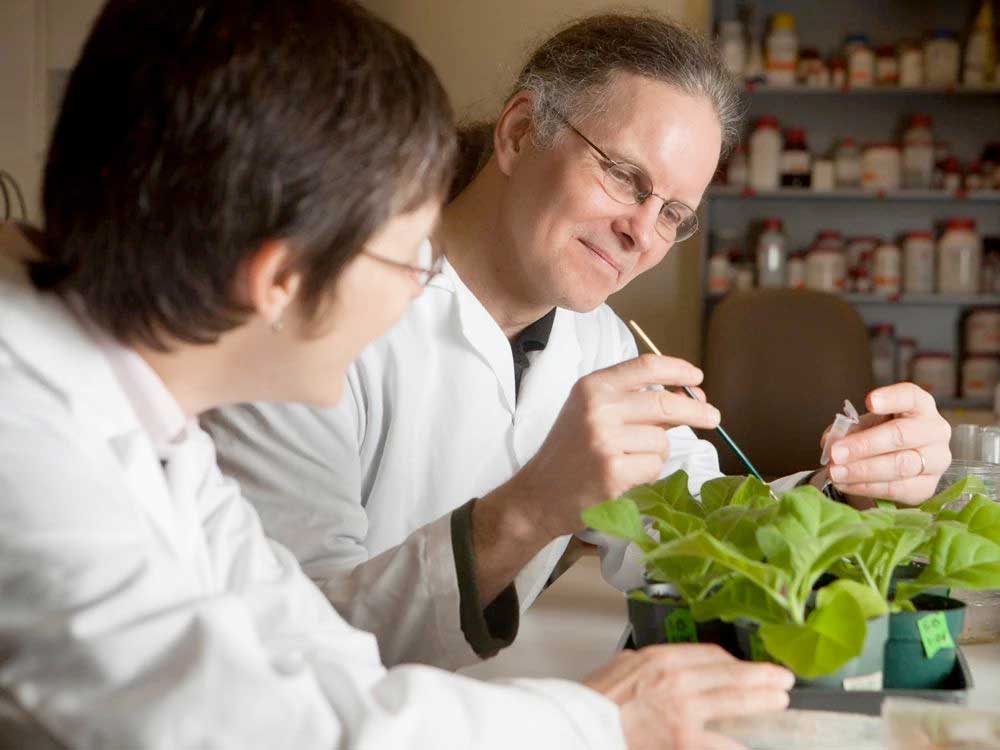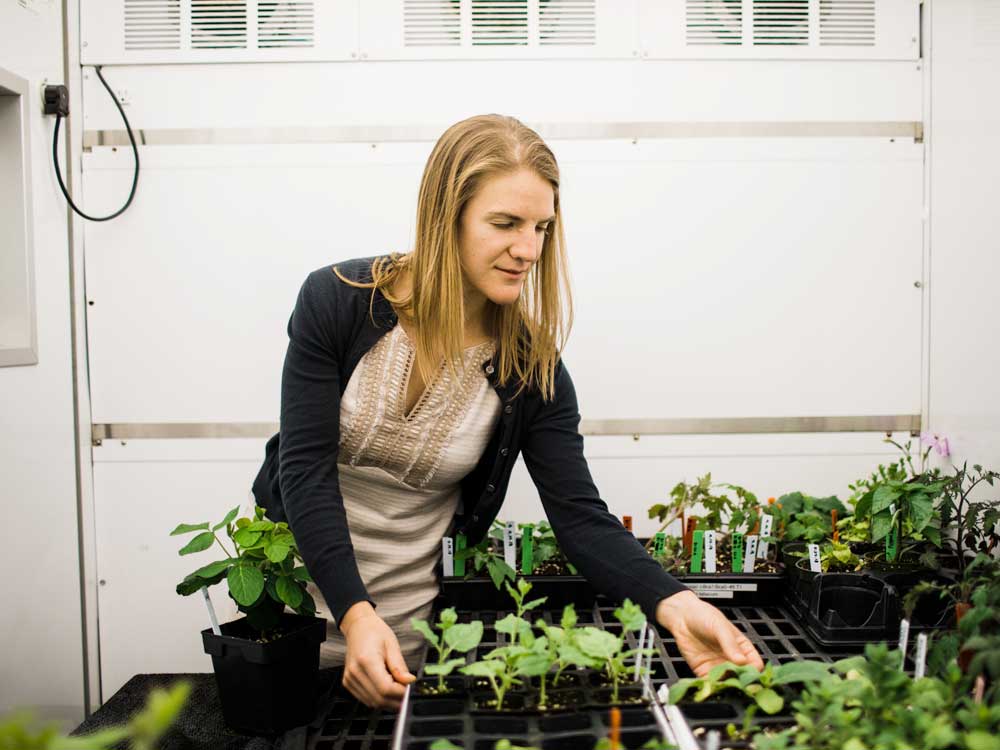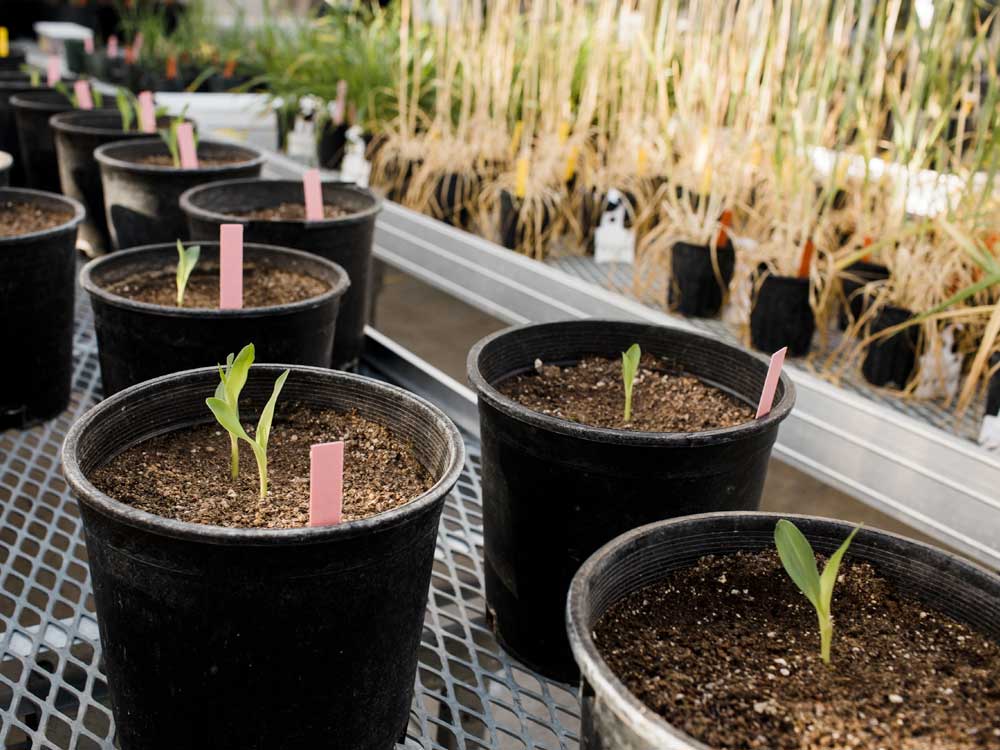Plant Communications
Integrative Team for Organismal Communication (iTOC)
Leads Margaret Frank, April Gu
Senior Personnel Sijin Li, Rebecca Mosher, Adrienne Roeder, Judith Brown, Amit Lal, Taryn Bauerle, Abraham Stroock, Romit Roy Choudhury, Amy Marshall-Colon, Lav Varshney, Jesse Woodson, Georg Jander, Robert Shepherd, Jenny Kao-Kniffin, Michael Gore, Mark Beilstein, Joyce Van Eck
The iTOC team will seek to access the hidden language of bio-communication within and between plants and their surrounding environment in real-time.
Plants simultaneously exist in two distinct environments. While their roots are embedded in the terrestrial landscape, their shoots inhabit the air. To coordinate between these two spaces, plants are wired with internal communication systems that enable them to engage in dynamic conversations. These conversations exist across scales: from cell-to-cell, to root-to-shoot, and between plants and their environment. Up to this point, scientists have only been able to listen in on static snapshots of these living conversations.
We will use integrated synthetic biology, metabolomics, proteomics, genomics, robotics, mathematical/ algorithmic modeling, and phenotyping approaches to access this hidden language of plant communication. By learning it, we aim to establish new conversations between plants, people, and the surrounding rhizosphere. These new conversations will help us to do the following:
- Learn the foundational principles of biological language.
- Map out and test the functions of the complex underground rhizosphere.
- Promote new interactions between plants and their environment.
Ultimately, our goal is to increase our knowledge and create tools that enable more sustainable agricultural practices.
In our work, we will pursue the following objectives:
- Objective 1: Understanding biocommunication using synthetic biology tools.
- Objective 2: Accessing the dark matter of belowground plant environments made up of biology, biogeochemistry, and physics.
- Objective 3: Exploring the complex networks underlying dynamic plant-environment communication.




